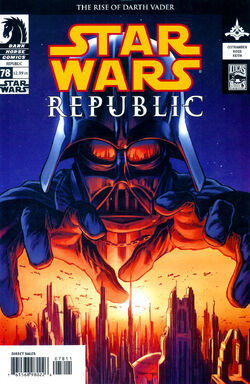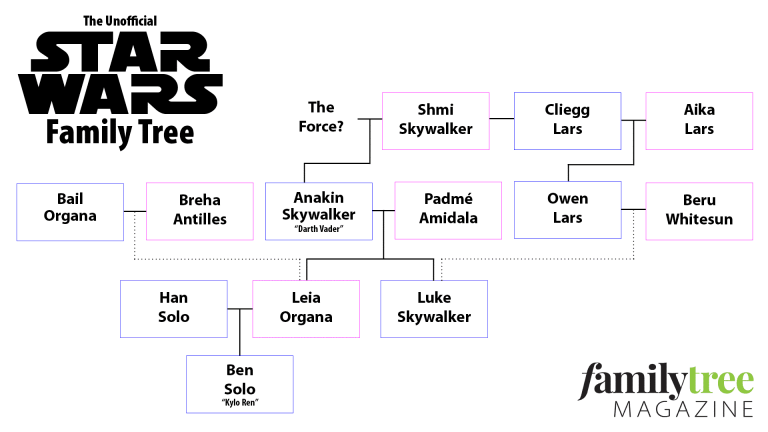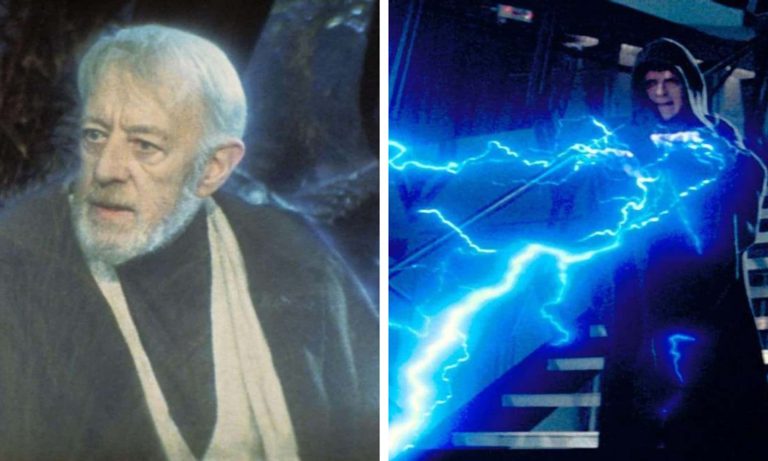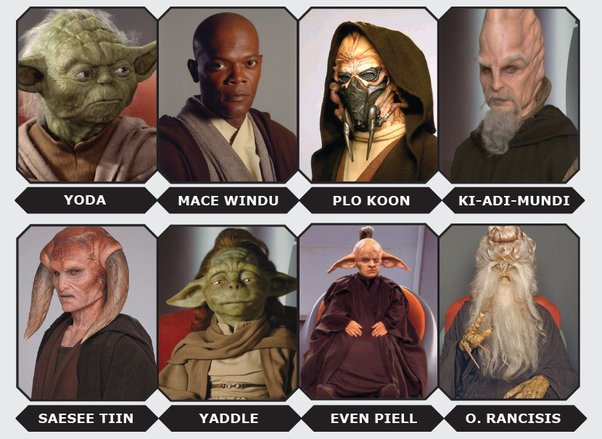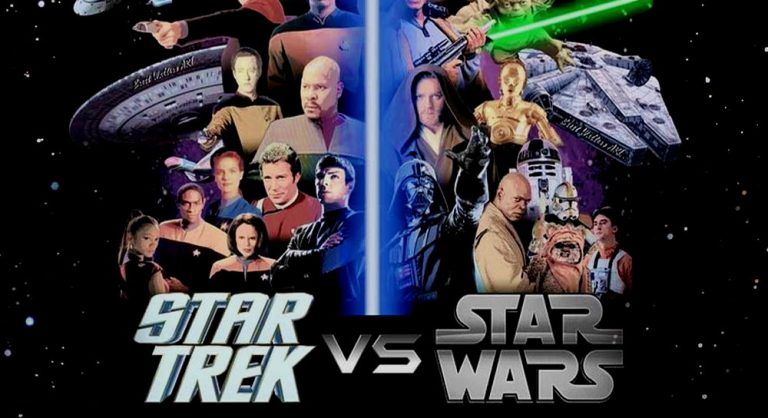What Is The Difference Between Star Wars Canon And Legends?
If you’re a Star Wars fan, you’ve probably heard of the terms “canon” and “Legends” being thrown around. But what exactly do they mean? Well, get ready to dive into the galaxy far, far away as we explore the difference between Star Wars canon and Legends.
In the vast universe of Star Wars, there are multiple sources of storytelling – from movies and TV shows to books and comics. Canon refers to the official and accepted continuity of the Star Wars universe. It includes the main nine episodic films, spin-off films like Rogue One and Solo, animated series like The Clone Wars and Rebels, and select novels, comics, and video games that are considered part of the official story. These stories are meticulously curated by the Lucasfilm Story Group to ensure consistency and coherence within the Star Wars universe. So, when you watch or read something from the canon, you can be confident that it is an integral part of the larger Star Wars story.
On the other hand, Legends refers to the vast collection of stories that were once considered part of the official Star Wars continuity but have since been rebranded as an alternate universe. These stories were created before the establishment of the Lucasfilm Story Group and were not subject to the same level of oversight and coherence. Legends encompasses a wide range of material, including novels, comics, video games, and even the infamous Star Wars Holiday Special. While these stories may not be considered official canon, they still hold a special place in the hearts of many Star Wars fans and offer unique and exciting adventures within the Star Wars universe. So, whether you’re exploring the canon or diving into the rich tapestry of Legends, there’s no shortage of Star Wars stories to enjoy. May the Force be with you!
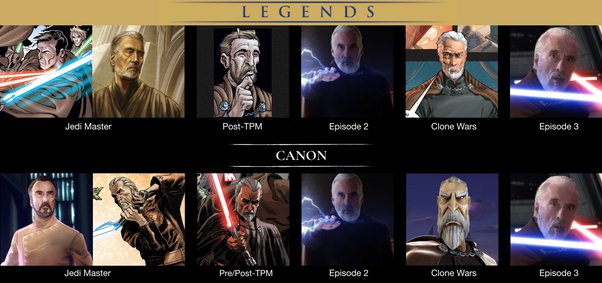
Understanding the Difference Between Star Wars Canon and Legends
Star Wars is a beloved franchise that has captured the hearts of millions of fans around the world. Over the years, the Star Wars universe has expanded through various mediums, including movies, TV shows, books, and comics. As the franchise grew, so did the lore and the stories told within it. However, with the vast amount of content, it became necessary to establish a clear distinction between what is considered official and what is considered non-canon. This led to the division between Star Wars canon and Legends.
Star Wars canon refers to the official and recognized stories, characters, and events within the Star Wars universe. These are the stories that are considered part of the main narrative and are officially recognized by Lucasfilm, the company behind Star Wars. The canon includes the nine main saga films, the animated TV shows like The Clone Wars and Rebels, and the new novels and comics released since Disney acquired Lucasfilm in 2012.
The Development of Star Wars Canon
The concept of Star Wars canon has evolved throughout the history of the franchise. Initially, when George Lucas created Star Wars, he had complete control over the story and the universe. However, as more creators and storytellers became involved, the need for a cohesive and consistent narrative became apparent. This led to the establishment of the Expanded Universe, which included novels, comics, and other media that expanded upon the Star Wars universe.
In 2014, Disney made the decision to reset the canon and create a new unified narrative. This meant that the vast majority of the Expanded Universe was no longer considered official canon. Instead, a new slate of stories was developed, with a focus on creating a cohesive and interconnected universe. This new canon was designed to be more accessible to new fans while still honoring the legacy of the original Star Wars stories.
The Role of Legends
Legends, on the other hand, refers to the non-canon stories and events within the Star Wars universe. These are the stories that were part of the Expanded Universe prior to the canon reset. While these stories are no longer considered official, they still hold a special place in the hearts of many Star Wars fans.
Legends includes beloved characters like Mara Jade, Grand Admiral Thrawn, and the Solo children. These stories provided fans with countless adventures and expanded upon the world of Star Wars in unique and imaginative ways. While they may not be considered official, they are still enjoyed and cherished by many fans.
Key Differences Between Star Wars Canon and Legends
There are several key differences between Star Wars canon and Legends that fans should be aware of. Firstly, the canon is considered the official and recognized stories within the Star Wars universe. These stories are considered part of the main narrative and are officially recognized by Lucasfilm. Legends, on the other hand, is non-canon and exists outside of the official narrative.
Another difference is the level of continuity between canon and Legends. Canon stories are designed to be interconnected and cohesive, with events from one story often impacting others. This allows for a more consistent and unified narrative. Legends, on the other hand, operates on a looser continuity, with stories often existing independently from one another.
Implications for Star Wars Fans
For Star Wars fans, understanding the difference between canon and Legends is important when engaging with the vast amount of content available. Canon stories provide the official and recognized narrative of the Star Wars universe, while Legends offers a wealth of additional stories and adventures.
It’s worth noting that while Legends stories may not be considered official, they can still provide fans with enjoyable and entertaining experiences. Many fans continue to explore the Legends material and find new stories to love within its pages.
In conclusion, the difference between Star Wars canon and Legends lies in their official status and continuity within the Star Wars universe. Canon stories are officially recognized and interconnected, while Legends offers non-canon stories that exist outside of the official narrative. Both have their merits and can provide fans with unique and exciting adventures in a galaxy far, far away.
Key Takeaways: What is the difference between Star Wars canon and Legends?
- Star Wars canon refers to the official and current storyline of the Star Wars universe, approved by Lucasfilm and Disney.
- Legends, on the other hand, refers to the previously published expanded universe material that is no longer considered official.
- Canon stories are considered to be the true and definitive versions of events in the Star Wars universe.
- Legends stories may still be enjoyed by fans, but they are not considered part of the official Star Wars timeline.
- The difference between canon and Legends lies in the level of continuity and authority within the Star Wars universe.
Frequently Asked Questions:
What is Star Wars canon and Legends?
Star Wars canon refers to the official and recognized storyline of the Star Wars universe. It includes all the movies, TV shows, books, comics, and other media that are considered part of the official story. On the other hand, Star Wars Legends, formerly known as the Expanded Universe (EU), refers to the vast collection of stories, books, and comics that were created before 2014 but are no longer considered part of the official canon.
While both canon and Legends explore the Star Wars universe, the key difference lies in their official status. Canon is the current and approved storyline that is recognized by Lucasfilm, the production company behind Star Wars. Legends, on the other hand, exists outside the official canon and is considered non-canon or “what-if” stories. These stories may have been beloved by fans but are not considered part of the official narrative moving forward.
Why was the distinction between canon and Legends made?
In 2014, Lucasfilm made the decision to redefine the Star Wars canon to streamline and consolidate the storytelling. This was primarily done to ensure a cohesive and consistent narrative across all future Star Wars content, including movies, TV shows, books, and comics. By creating a clear distinction between canon and Legends, Lucasfilm aimed to provide a definitive and authoritative version of the Star Wars universe.
The decision to make this distinction also allowed Lucasfilm to incorporate new stories and characters without being tied down by the vast amount of existing Legends material. It provided a fresh start and allowed for greater creative freedom in shaping the future of the franchise.
Are any elements from Legends still considered canon?
Although the majority of the Star Wars Legends material is no longer considered canon, there have been instances where certain elements from Legends have been reintroduced into the official canon. However, these reintroductions are carefully selected and often undergo modifications to fit into the new canon.
For example, characters like Thrawn and Saw Gerrera, who originated in Legends, have been brought back into the official canon through the animated series Star Wars Rebels and the live-action film Rogue One: A Star Wars Story, respectively. These reintroductions provide opportunities for fans to see beloved characters and concepts from Legends in new and updated ways.
Can I still enjoy Star Wars Legends material?
Absolutely! Just because Legends material is no longer part of the official canon doesn’t mean it’s not worth exploring. The Star Wars Legends stories still hold a special place in the hearts of many fans and offer unique and exciting adventures within the Star Wars universe.
Whether it’s classic novels like the Thrawn Trilogy or fan-favorite comics like Dark Empire, there’s plenty of rich and engaging content to dive into. Legends material allows fans to explore different interpretations of familiar characters, encounter new storylines, and delve deeper into the lore of the Star Wars universe.
Will there be more Star Wars Legends material in the future?
While Lucasfilm is primarily focused on expanding the official canon, there may still be occasional releases of Star Wars Legends material. These releases could include reprints of popular Legends stories or special editions that cater to fans who enjoy the non-canon content.
However, it’s important to note that the majority of new Star Wars content, including movies, TV shows, books, and comics, will continue to be tied to the official canon. Lucasfilm’s priority is to build and expand upon the current storyline, ensuring a cohesive and interconnected Star Wars universe for fans to enjoy.
STAR WARS: Canon and Legends Timeline Explained (2021)
Final Summary: Understanding the Difference Between Star Wars Canon and Legends
After diving into the vast Star Wars universe, it’s clear that there is a distinct difference between Star Wars canon and Legends. While both offer captivating stories and characters, they each exist within their own separate realms. Canon refers to the official and current storyline recognized by Lucasfilm, while Legends encompasses the expanded universe that existed before the Disney acquisition.
In conclusion, the key distinction lies in the level of official recognition. Canon material such as movies, TV shows, and new books are considered the “true” Star Wars story, adhering to a cohesive narrative. On the other hand, Legends encompasses a wealth of content from books, comics, and games that were created prior to the establishment of the current canon. These stories are no longer considered official, but they still hold immense value for fans who enjoy exploring different facets of the galaxy far, far away.
So, whether you’re a die-hard Star Wars enthusiast or a casual fan, understanding the difference between Star Wars canon and Legends will enhance your appreciation of the universe. Delve into the official canon to experience the ongoing saga as it unfolds, and don’t hesitate to explore the rich tapestry of stories within the Legends realm. May the Force be with you as you continue your journey through the vast Star Wars universe!

